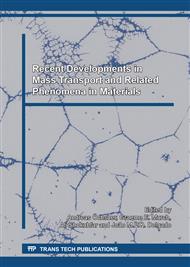p.97
p.102
p.111
p.117
p.121
p.128
p.131
p.135
p.153
Assessment of the Availability of Forest Biomass for Biofuels Production in Southwestern Portugal
Abstract:
In 2014, Portugal was the seventh largest pellets producer in the World. Since the shortage of raw material is one of the major obstacles that the Portuguese pellets market faces, the need for a good assessment of biomass availability for energy purposes at both country and regional levels is reinforced. This work uses a Geographical Information System environment and remote sensing data to assess the availability and sustainability of forest biomass residues in a management unit with around 940 ha of maritime pine forest. The period considered goes from 2004 to 2015. The study area is located in Southwestern Portugal, close to a pellets factory; therefore the potential contribution of the residual biomass generated in the management unit to the production of pellets is evaluated. An allometric function is used for the estimation of maritime pine above ground biomass. With this estimate, and considering several forest operations, the residual biomass available was assessed, according to stand composition and structure. This study shows that, when maritime pine forests are managed to produce wood, the amount of residues available for energy production is small (an average of 0.37 t ha-1 year-1 were generated in the study area between 2004 and 2015). As a contribution to the sustainability of the Portuguese pellets industries, new management models for maritime pine forests may be developed. The effect of the pinewood nematode on the availability of residual biomass can be clearly seen in this study. In the management unit considered, cuts were made to prevent dissemination of the disease. This contributes to a higher availability of forest residues in a specific period of time, but, in the medium term, they lead to a decrease in the amount of residues that can be used for energy purposes.
Info:
Periodical:
Pages:
121-127
Citation:
Online since:
February 2017
Authors:
Keywords:
Price:
Сopyright:
© 2016 Trans Tech Publications Ltd. All Rights Reserved
Share:
Citation:


